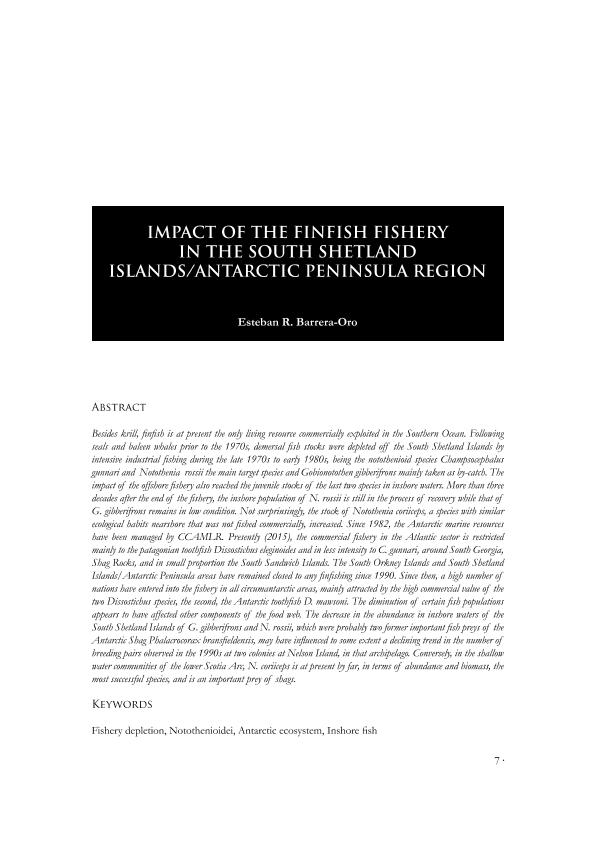Artículo
Impact of the finfish fishery in the South Shetland Islands/Antarctic Peninsula region
Fecha de publicación:
09/2015
Editorial:
Agenda Antártica
Revista:
Journal of Antarctic Affairs
ISSN:
2451-7755
Idioma:
Inglés
Tipo de recurso:
Artículo publicado
Clasificación temática:
Resumen
Besides krill, finfish is at present the only living resource commercially exploited in the Southern Ocean. Following seals and baleen whales prior to the 1970s, demersal fish stocks were depleted off the South Shetland Islands byintensive industrial fishing during the late 1970s to early 1980s, being the notothenioid species Champsocephalus gunnari and Notothenia rossii the main target species and Gobionotothen gibberifrons mainly taken as by-catch. Theimpact of the offshore fishery also reached the juvenile stocks of the last two species in inshore waters. More than three decades after the end of the fishery, the inshore population of N. rossii is still in the process of recovery while that of G. gibberifrons remains in low condition. Not surprinsingly, the stock of Notothenia coriiceps, a species with similar ecological habits nearshore that was not fished commercially, increased. Since 1982, the Antarctic marine resources have been managed by CCAMLR. Presently (2015), the commercial fishery in the Atlantic sector is restricted mainly to the patagonian toothfish Dissostichus eleginoides and in less intensity to C. gunnari, around South Georgia, Shag Rocks, and in small proportion the South Sandwich Islands. The South Orkney Islands and South Shetland Islands/Antarctic Peninsula areas have remained closed to any finfishing since 1990. Since then, a high number of nations have entered into the fishery in all circumantarctic areas, mainly attracted by the high commercial value of the two Dissostichus species, the second, the Antarctic toothfish D. mawsoni. The diminution of certain fish populations appears to have affected other components of the food web. The decrease in the abundance in inshore waters of the South Shetland Islands of G. gibberifrons and N. rossii, which were probably two former important fish preys of the Antarctic Shag Phalacrocorax bransfieldensis, may have influenced to some extent a declining trend in the number of breeding pairs observed in the 1990s at two colonies at Nelson Island, in that archipelago. Conversely, in the shallow water communities of the lower Scotia Arc, N. coriiceps is at present by far, in terms of abundance and biomass, the most successful species, and is an important prey of shags.
Palabras clave:
Fishery Depletion
,
Notothenioidei
,
Antarctic Ecosystem
,
Inshore Fish
Archivos asociados
Licencia
Identificadores
Colecciones
Articulos(SEDE CENTRAL)
Articulos de SEDE CENTRAL
Articulos de SEDE CENTRAL
Citación
Barrera Oro, Esteban; Impact of the finfish fishery in the South Shetland Islands/Antarctic Peninsula region; Agenda Antártica; Journal of Antarctic Affairs; II; 9-2015; 7-19
Compartir




